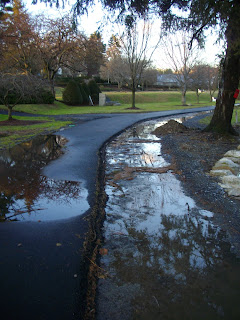Before getting into the paving discussion, I figured it would be wise to consider the current path types in some of the major parks in Allentown.
First, in Trout Creek Parkway, the pathway is entirely paved.
At The Lehigh Parkway, there is paved and famously unpaved walking trails.
In Trexler Park, the entirety of the walking path is paved and like the Parkway, once served as a through route for automobiles.
The bottom line is that the majority of existing trails in Allentown’s parks are in fact paved. Where they are not, the path is most typically defined by gravel as in Jordan Park or formerly, in Cedar Beach Parkway.
As future development of trails is considered, should this trend continue? Should we pave our park paths?
I consider this a matter of environmental protection. Given that our parks are preserved open spaces, the health of the ecosystems therein should be the primary factor given consideration when contemplating future park development. Therefore, it would seem that the decision to pave or not to pave comes down to whichever method is most environmentally sound.
So, which option is it?
The bottom line is that both paving new trails and creating new unpaved trails in natural spaces is environmentally hazardous. It is a tricky proposition. Establishing easy access to what is left of nature in an increasingly urban world is a necessity. .
Therefore, I advocate the creation of trails and paths to allow access to our wild spaces. I consider it a priority of local governments to ensure that such an access exists. That access must be environmentally sound. That access must preserve the health of the ecosystem. With that in mind, I believe that the best answer to the question raised by the title of this blog post is answered by the Pennsylvania Department of Conservation and Natural Resources.
In a publication entitled “Creating Sustainable Community Parks”, the DCNR lays out the answer to the question simply:
“ Minimize impermeable surfaces like roads, parking lots, and paved trails. Consider replacing asphalt with concrete and permeable pavement, mulch paths, gravel lots and natural vegetation. Permeable surfaces help to recharge groundwater, reduce erosion, lessen flooding events, and filter out pollutants. When impermeable surfaces must be used, arrange them in an area where they will not fragment habitat, make them as small as possible, and keep them away from water bodies.”
So, the answer is, pave sparingly. If unpaved surface paths exist they must be maintained in a fashion that will keep the ground from being compressed by increased foot travel; which will lead to similar environmental hazards as paved trails.
It is my belief that the advice of the DCNR should be followed in any new construction by our Parks Department in our open spaces. The paving around the reflecting ponds in Cedar Beach Parkway, as it currently exists, is environmentally degrading. I do not support further paving at Cedar Beach Parkway given the paths close proximity to Cedar Creek as well as its location in a floodplain.
The current project at Cedar Beach Parkway is not being created in a responsible fashion. I believe that accessibility to our parks should be increased, but not at the expense of the parks themselves. There are alternatives to black top paving and those alternatives as described above should be implemented in any further development.
By the way, as a reminder to all Remember readers and park lovers, the DCNR also maintains the necessity of Riparian Buffers near any water body. Hopefully, we will see more of those this summer. I’ll be waiting, camera in hand.
Labels: Cedar Beach Parkway, Trail Study





















































